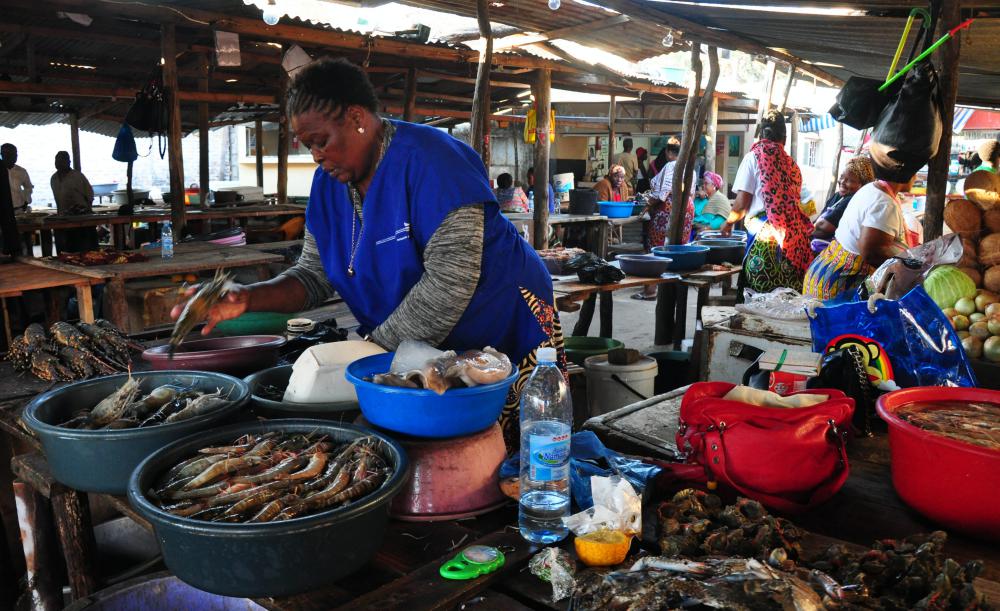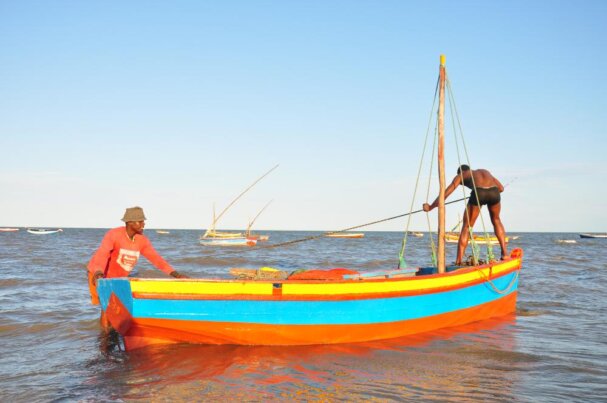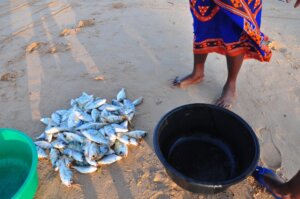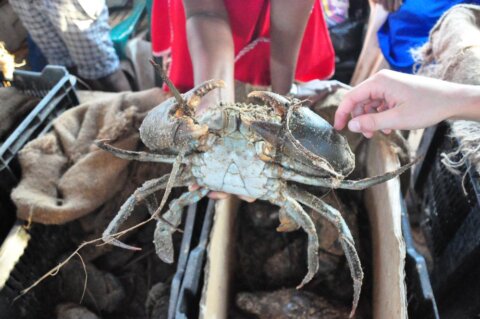Ask any local and they will tell you that there are only two kinds of people in the world: those who love the Maputo Fish Market and those who loathe it.
During my trip to Mozambique’s capital city (read: 48 hours in Maputo: A guide to Mozambique’s capital), I was drawn in by the market’s rawness – quite literally – there’s something quite alluring about how real it is. There are no airs and graces put on for the sake of tourists, it’s a take-it-or-leave-it kind of place.

Dhow boats maroon themselves on the shores of the nearby beach. Barefoot vendors from the fish market crowd around as the fishermen separate their daily catch into colourful plastic bags or buckets, according to the size and type of fish or seafood they have caught. It is here – only about 100 metres away from the fish market that the predominantly female market vendors buy fresh fish and seafood for their stalls.
One of my favourite things about Mozambique is that no matter where you go, there’s always freshly caught fish and seafood on offer. We over-indulged in seafood curries, fresh fish fillet and grilled lobster on Bazaruto Island too.
Back at the market – only a short walk along the beach from the Maputo Southern Sun Hotel where I was staying – the clams, prawns, shrimps, squids and octopi are placed into buckets of ice water to keep them fresh and cool in the tropical heat. The fish are displayed side-by-side on the newspaper-laden wooden tabletops. The crayfish are stacked one on top of the other with the biggest on top, so as to attract customers. And, indeed, they seem to be the biggest draw card – especially for the tourists – they go for around 300 meticals (around R100) per kilo. These crayfish are midnight blue at their pincers and brown at their tails; it’s only when they are cooked that the exoskeleton takes on a burnt orange and deep red hue. Crabs’ pincers are tied with strips of reeds and their cardboard boxes are covered with hessian cloth.
As I make my way up and down the rows of tables, the sellers spray the fish with water from plastic bottles with small holes in the lids to keep their scales glistening in the afternoon sun. They wave to attract my attention. “Madam,” they call as they lift up giant tiger prawns in a display of their size, “Good price for you today. How many you want?”

One of the sellers tells me that the market is moving one block up the road to new premises along the beachfront (it opened just recently and this old market is being transformed into luxury apartments), where each of them will have a cubicle in the building with a cement table and a supply of fresh running water. She explains that a few are wary about the move, as they have been selling at this market for years and years, but most are excited at the new opportunity and that fact that they’re more likely to draw that other kind of person – the ones who loathe this one.

As I show interest in a stall, I am surrounded by restauranteurs and waitresses from all sides; other sellers raise and show off their fish hoping to make a sale. While locals buy fish to prepare at home, restauranteurs vie for my attention, as they can see that I am a tourist and won’t be preparing my purchase at home. They all want to take me back to their restaurant and explain that they will prepare whatever I buy to my liking or in the traditional Mozambican way.

And so you will sit at a wooden table on a plastic chair in an open courtyard eating what very well may be the one of the best seafood meals you’ve had in Maputo, to the sound of satiated conversation. And that my friends is why I loved the (old) Maputo Fish Market so.
Have you ever been to a similar market (that tour guides may shy away from), but which was a real cultural experience? Please tell me about it in the comments below.
***
I was hosted by Southern Sun Maputo and thought I’d tell you a few things to do on your visit. I maintain full editorial control of all content published on this website. You can find more of my photographs from this road trip on my Instagram account by using the #EagerJourneystoMoz hashtag.











Pingback: Maputo's (old) Fish Market - Eager Journeys Travel Blog - African Food
Pingback: South Africa's Panorama Route: A self-drive guide | Eager Journeys
Nice to hear about a place that’s more local and less touristy ;)
Yes, that’s what I loved about it! Sad to see it go, now that the new market has been built — but that’s why I wanted to write about this experience. I also really enjoyed visiting the main market (which I wrote about in another post) as it was so authentic. :)